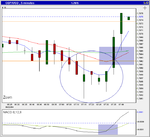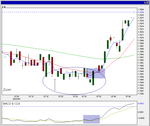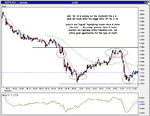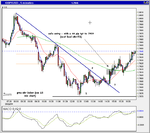JTrader
Guest
- Messages
- 5,741
- Likes
- 507
Forex has high liquidity, big priice movements and the ability to trade in very large amounts - thus the potential is there to make higher profits than in any other market - when trading the spot market through a retail forex broker, directly on the interbank market or through CME Globex futures.
I often read that for the above such reasons, forex the the most risky market to trade - as a trader can incur big losses.
However, my intraday trading approach is along the lines of the standard not risking more than 1% trading capital per single trade. As long as an (intraday) trader adheres to this philosophy - why should forex trading be seen as more risky than any other form of trading - UK stocks, indices etc. Do you agree?
Major economic news releases appear to be the main forces that drive forex price action, with a 100+ pip spike possible within seconds. For this reason a trader may find it difficult to exit a position at such times and stay within their 1% capital risk per trade rule......... The simple solution to this it would seem, is to keep out of trades during major news releases.
Are there any other reasons why forex trading is considered higher risk than other forms of trading? if so, what are they?
Do you think that forex trading is higher risk than other forms of trading? if so, why?
Many thanks
jtrader.
I often read that for the above such reasons, forex the the most risky market to trade - as a trader can incur big losses.
However, my intraday trading approach is along the lines of the standard not risking more than 1% trading capital per single trade. As long as an (intraday) trader adheres to this philosophy - why should forex trading be seen as more risky than any other form of trading - UK stocks, indices etc. Do you agree?
Major economic news releases appear to be the main forces that drive forex price action, with a 100+ pip spike possible within seconds. For this reason a trader may find it difficult to exit a position at such times and stay within their 1% capital risk per trade rule......... The simple solution to this it would seem, is to keep out of trades during major news releases.
Are there any other reasons why forex trading is considered higher risk than other forms of trading? if so, what are they?
Do you think that forex trading is higher risk than other forms of trading? if so, why?
Many thanks
jtrader.




